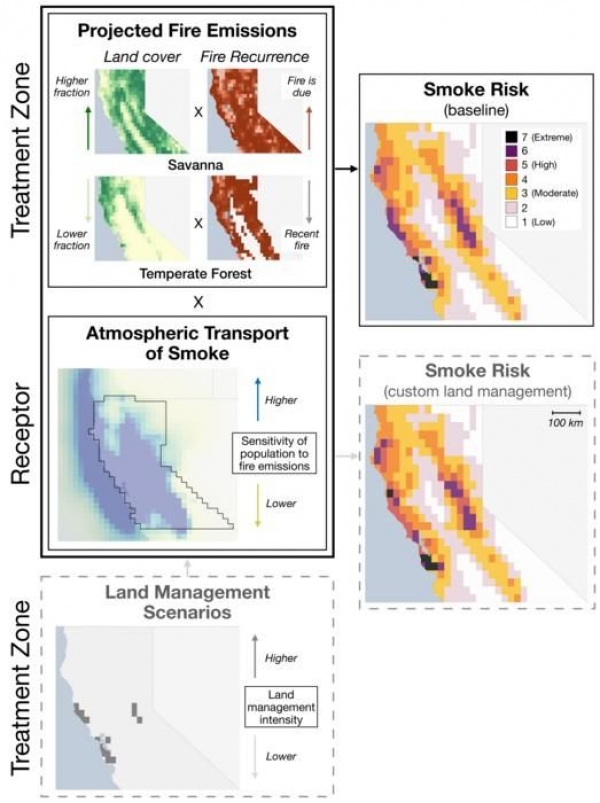New app estimates health impacts of breathing smoke from wildfires.
New app estimates health impacts of breathing smoke from wildfires.
Earlier this year, wildfires in southern California killed 30 people, destroyed more than 18,000 homes and burned more than 57,000 acres. The fires were a stark reminders of the threat of worsening climate change, and the increased likelihood of future devastating fires. With these fires comes smoke, which has long-term health effects for the people exposed to it – whether they are close to the source, or many miles away.
A Harvard atmospheric modeling team has created an online platform that could help communities identify areas in need of controlled burns or other fire management strategies, with the goal of preventing future uncontrolled fires and, more specifically, reducing smoke exposures.
The research is published in Environmental Science & Technology and is led by Loretta Mickley, senior research fellow in chemistry-climate interactions at the John A. Paulson School of Engineering and Applied Sciences (SEAS) and leader of the Atmospheric Chemistry Modeling Group. Two alumni from Mickley’s group co-led the effort: Tianjia (Tina) Liu, now an assistant professor at University of British Columbia, and Makoto Kelp, now a postdoctoral fellow at Stanford University.
Read more at Harvard John A. Paulson School of Engineering and Applied Sciences
Image: Schematic workflow for generating smoke risk index. The index is a metric that highlights those grid cells where potential wildfires would pose the greatest population-weighted smoke exposure downwind. (Credit: Mickley Lab / Harvard SEAS)




